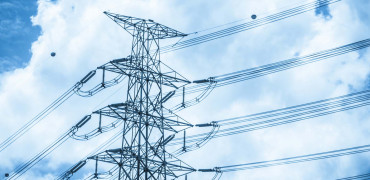The UK government’s Ten Point Plan for A Green Industrial Revolution, sets a target of 600,000 heat pump installations per year by 2028.
In Scotland, the draft Heat in Buildings Strategy (February 2021) also highlights the strategic importance of heat pumps in achieving the country’s decarbonisation goals. That’s a significant challenge – and an opportunity.
Mitsubishi Electric has been developing and delivering heat pump technology for many years, and we have a range of options suitable for homes and commercial buildings.
This includes the latest Ecodan QAHV commercial heat pump that can produce hot water up to 90°C.
Since we have worked on heat pump projects for more than a decade, across a diverse range of building types, we know that there are some common questions installers, and their clients, often have about this technology.
Here, we address the five most common questions
Cold air
1. If a heat pump relies on outside air, will it still deliver heating and hot water at low temperatures?
Heat pumps work by extracting heat energy from outside air, transferring this through the vapour compression cycle.
So when it is cold outside, it is important to know your heat pump will provide the same kW heat capacity as you’d expect in warmer months.
A 42kW Mitsubishi heat pump will function effectively even at -20°C, and it will still give you 42kW capacity, even in winter when its -7°C outside.
Noise
2. Is the outdoor unit of a heat pump system noisy?
Mitsubishi Electric realises that noise levels are a concern for many projects.
Commercial buildings may well be positioned closely to homes, particularly in mixed-use developments.
But both our domestic and commercial ranges of heat pumps are designed with quiet operation in mind.
Even one of our largest commercial Ecodan QAHV models operates at only 56dB.
Hot water and heating
3. Can a heat pump provide heating and hot water?
Heat pump technology has developed a great deal over the past ten years. It used to be the case that heat pumps were a low-temperature heating solution. Now, however, the latest heat pumps can provide domestic hot water, even for commercial buildings with high demands such as university accommodation and leisure centres.
The Ecodan QAHV, for example, delivers water at 90°C using either buffer stores or plate heat exchangers (depending on the project’s peak load requirements).
An added benefit of this indirect method of hot water production is that it helps to protect the unit’s PHE from poor water quality and limescale issues.
BREEAM points
4. Will using a heat pump help with BREEAM points?
In short, yes, using the right heat pump can gain BREEAM points. The Ecodan QAHV uses CO2 as a refrigerant, which has a Global Warming Potential (GWP) of 1.
This gains two BREEAM credits by default (for a GWP under 10).
The QAHV is also a hermetically sealed system, minimising the potential for leaks, which gains a third BREEAM credit.
Low-GWP refrigerants
5. Do Mitsubishi Electric heat pumps use other low-GWP refrigerants?
Yes, as well as the QAHV range with CO2 as a refrigerant, Mitsubishi Electric’s Ecodan range for commercial projects includes air source heat pumps that use R32 refrigerant.
These can also be used in a cascade arrangement for buildings with a high heat load, or that are difficult to insulate.
There is no doubt that the future of heating and hot water looks very different from the present. Many designers and installers will find themselves getting to grips with heat pumps in the future as government presses forward with decarbonisation plans.
At Mitsubishi Electric, we are here to offer help and support to industry professionals to help them understand the benefits of this approach.
Find me on LinkedIn and I’ll be happy to answer any further questions.
Erling Binns is M&E Business Development Manager, Scotland

